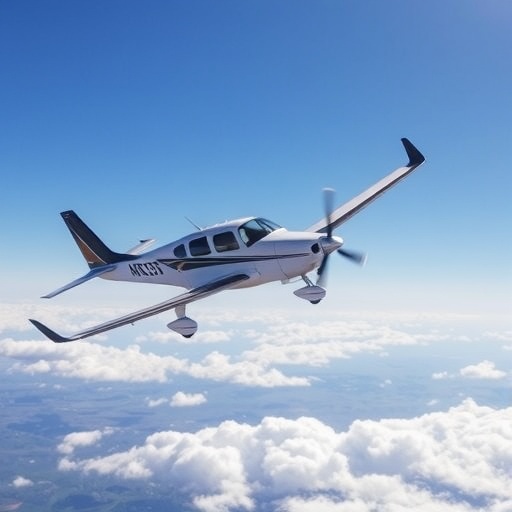A groundbreaking systematic review conducted by researchers at the University of South Australia (UniSA) exposes the persistent dangers faced by pilots in light, fixed-wing general aviation aircraft. The study highlights a troubling reality: despite technological advances and regulatory oversight, piloting private aircraft continues to pose a significantly higher risk compared to commercial aviation, accounting for over 90% of aviation-related fatalities. This comprehensive literature review synthesizes data from 46 key studies to offer new insights into the human factors, training gaps, and operational challenges that underpin the general aviation safety crisis.
General aviation, commonly defined as private or recreational flying distinct from scheduled commercial or freight services, constitutes the foundational phase for nearly all civilian pilots. However, unlike commercial airlines that benefit from rigorous training protocols and advanced safety management systems, general aviation remains vulnerable to a spectrum of risks that are not adequately addressed. According to the review, the accident rate in this sector is disproportionately high, with human error and insufficient recurrent training emerging as the primary contributors to fatal mishaps.
One of the most significant findings of the study is the critical role human factors play in general aviation accidents. These factors encompass a range of pilot-related errors including flawed decision-making, lapses in situational awareness, and degradation of cognitive function under stress. Particularly hazardous are conditions involving poor visibility—such as flying through clouds, fog, or heavy precipitation—where pilots lacking formal instrument flight training are forced to rely entirely on cockpit instruments. In these scenarios, spatial disorientation becomes a deadly trap, causing pilots to lose control within minutes.
The statistical analysis within the review underscores that flights conducted in reduced visibility conditions are seven times more likely to culminate in fatal accidents. This heightened risk is exacerbated during nighttime operations, where accident rates soar up to eight times relative to daylight flights. Night flying introduces an additional sensory challenge that compounds spatial disorientation risks, especially for less experienced pilots who have not attained proficiency in instrument flight rules (IFR) or undergone recurrent simulator training.
Critical phases of flight, including takeoff, landing, and low-altitude maneuvering, are pinpointed as especially perilous. These stages demand precision and leave minimal margin for error. The review details how stalls, often a result of pilot misjudgment or loss of control, frequently occur during these vital moments, leading directly to fatal outcomes. Such findings highlight the necessity for enhanced training focused specifically on emergency recovery procedures and handling unexpected mechanical failures during these high-risk windows.
A disturbing trend identified is the frequency with which general aviation pilots maintain only the minimum flying hours required to remain legally current. Co-author Associate Professor Paul Lee emphasizes that legal currency does not equate to proficiency. Skills and reflexes decline sharply after extended periods without flight, and many pilots fail to engage in continuous, hands-on practice that would reinforce critical competencies and keep them prepared for emergency scenarios. The disconnect between regulatory compliance and actual pilot capability remains a glaring safety gap.
To address these deficiencies, the researchers advocate widespread adoption of recurrent training through cost-effective and accessible means. In-air training is expensive and logistically demanding, particularly for hobbyists and private pilots operating on limited budgets. Therefore, expanding the use of advanced flight simulators offers a pragmatic solution, enabling pilots to rehearse emergency maneuvers and decision-making skills in controlled environments. Emerging technologies such as virtual reality (VR) and artificial intelligence (AI) promise to further democratize training access, allowing for immersive and personalized learning experiences that were previously unattainable.
The study also draws attention to a largely overlooked dimension—mental health and wellbeing within the general aviation community. An industry report cited in the review reveals widespread concern among aviation professionals about the impact of stress, fatigue, financial pressures, and toxic workplace cultures on mental health. These psychosocial factors may underlie some accidents, although comprehensive research remains scarce. The authors stress the urgent need for investigations into how mental health challenges intersect with pilot performance and accident causation.
Beyond retrospective accident analysis, the researchers advocate for more proactive safety measures. Real-time flight data monitoring and analytics can detect risky behaviors and deviations from safety norms before they result in accidents. Harnessing this wealth of information through advanced telemetry and machine learning could revolutionize incident prevention and shift general aviation toward a culture of continuous risk management rather than reactive response.
UniSA Aviation Professor Shane Zhang emphasizes that the safety crisis within general aviation, although deeply entrenched, is by no means insurmountable. Armed with a clear understanding of the major risk factors—ranging from pilot skill erosion and poor weather operations to mental health and training resource gaps—the aviation community is poised to implement evidence-based interventions. These changes will require coordinated efforts from regulators, flight schools, technological innovators, and pilots themselves to foster a culture of safety.
Ultimately, this comprehensive study serves as a wake-up call to the aviation industry. General aviation, a vital training ground for future commercial pilots and an essential part of national air transport infrastructure, demands urgently refreshed safety strategies. With the integration of modern training technologies, mental health support, and real-time operational monitoring, it is possible to drastically reduce fatal accidents and elevate the safety standard of private flying to meet those of commercial aviation.
Subject of Research: General Aviation Accident Factors and Prevention
Article Title: A systematic review of general aviation accident factors, effects and prevention
News Publication Date: 1-Sep-2025
Web References:
Study in Journal of Air Transport Management
References:
- Aviation Occurrence Statistics 2010 to 2019, Australian Transport Safety Bureau
- Navigating Aviation & Bastion Insights. (2025). National General Aviation Culture and Wellbeing Survey: Final Report
Keywords: Aviation, Aeronautical Engineering, General Aviation, Flight Safety, Human Factors, Pilot Training, Spatial Disorientation, Flight Simulators, Mental Health, Flight Data Monitoring




